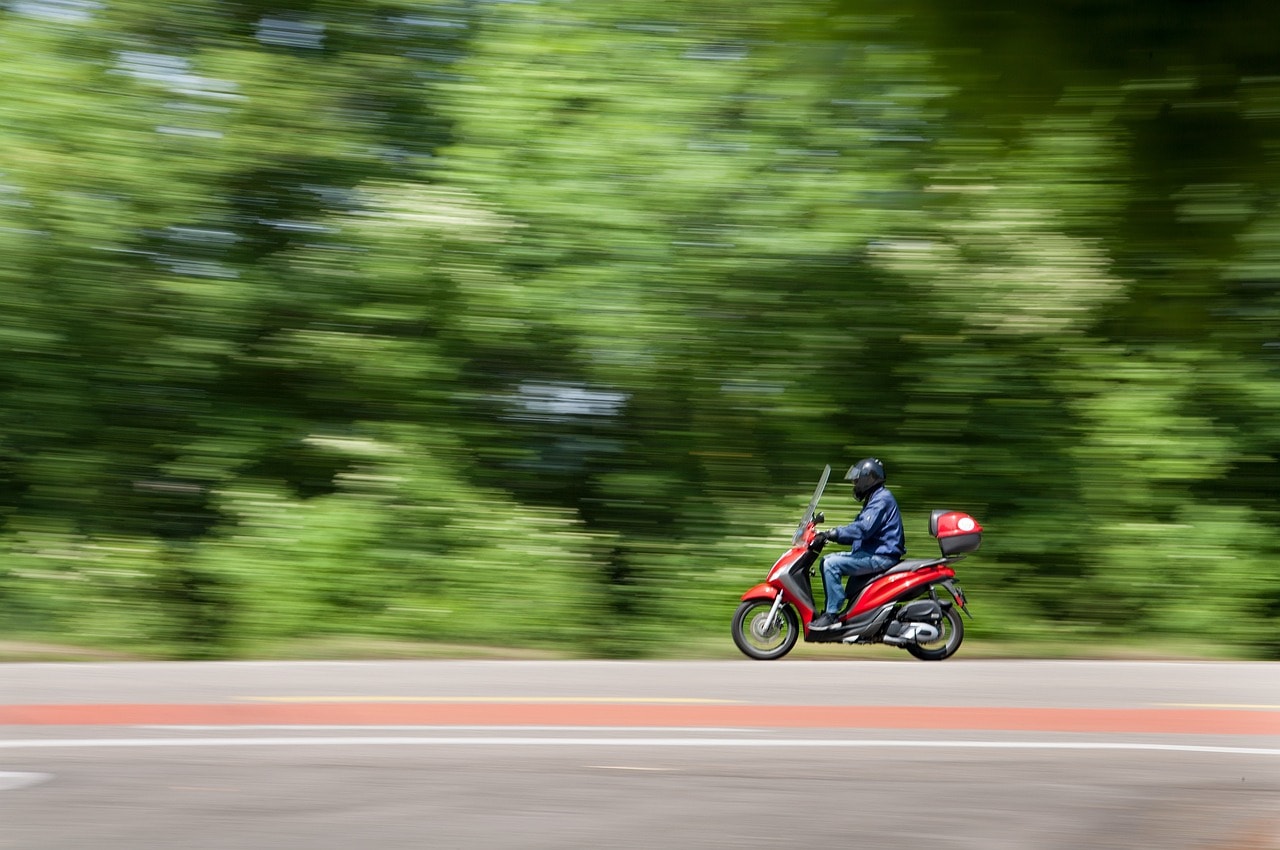Mopeds and scooters are the easiest choices of transportation on a beautiful island like Hawaii. They’re more fuel-efficient, eco-friendly, and easy to control and maneuver through the streets of the island. If you want to explore Hawaii with its core beauty, I’d recommend you rent a moped or scooter. If you think starting a moped is easy, then for some riders, it’s not. Mopeds are powered by small engines, but even if a pro rider comes, it can get a bit confusing for them to start a moped because it can be tricky. So the question of how to start a scooter may seem silly to you now, but I bet you’d be the first to lurk here if you face the same situation.
Mopeds’ smaller engines can be difficult to start in cold weather. Additionally, they have pedals and often carburetors that can be sensitive to adjustments. So in this detailed guide, I will explain why starting a moped can be tricky and what to do when a moped does not want to start.
Reasons Why Starting a Moped Can Be Tricky
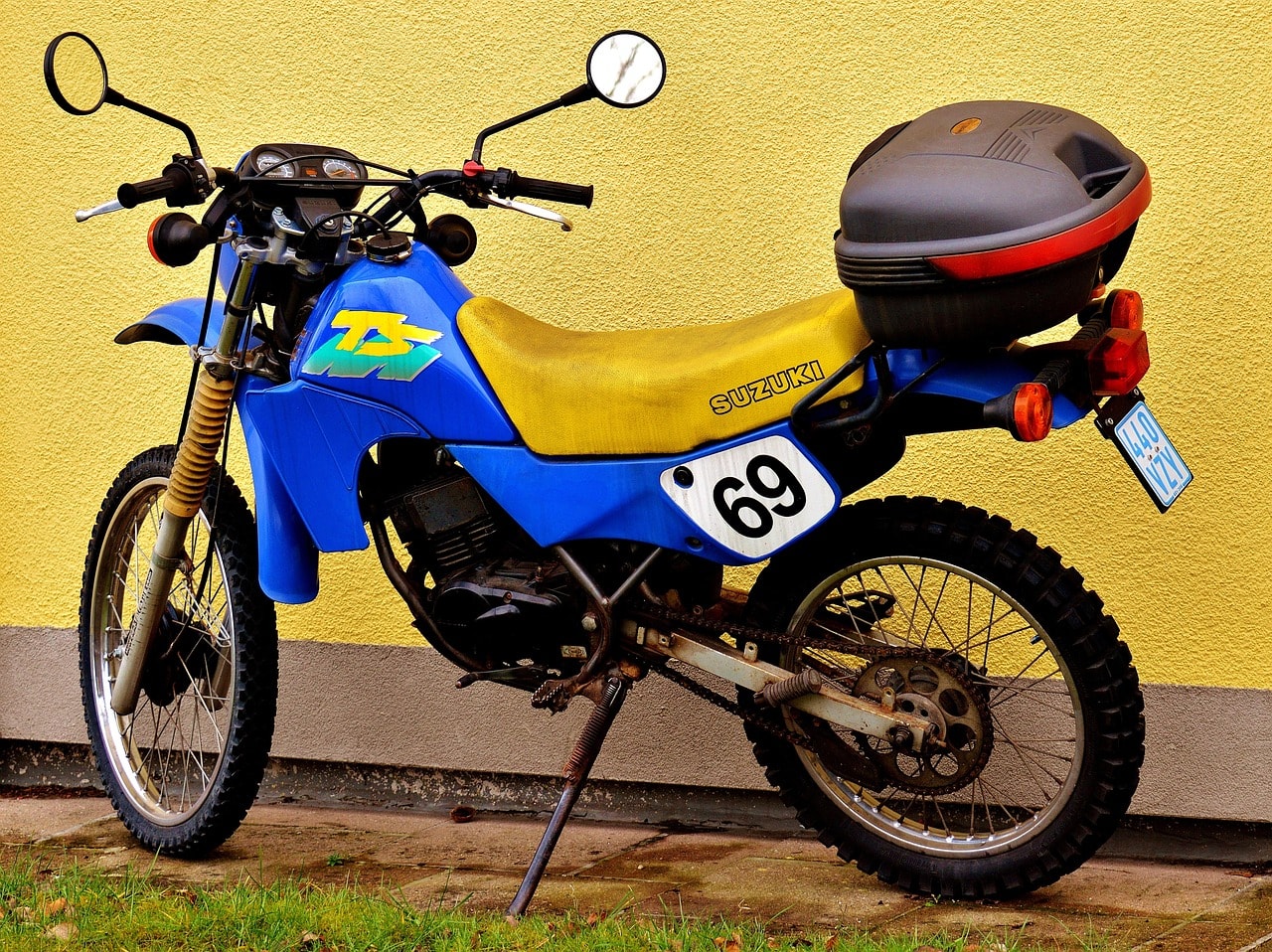
Before we learn how to start a scooter, let’s look at the common reasons why your scooter or moped won’t start in the first place.
Carburetor Adjustments and Fuel Valve
If the carburetor present in your moped is not adjusted correctly, this can cause the engine to run poorly or even refuse to start. Now here, the solution is simple—you need to readjust the carburetor. For this, you’re supposed to consult the moped’s owner’s manual. The manual will provide you with the necessary instructions on how to adjust the carburetor for different weather conditions and fuel types.
Cold Weather
If you’re traveling in weather that’s too cold, the engine oil becomes thicker, and the air becomes denser. This will obviously make it more difficult for the engine to turn over and start. Here, all you need to do is use the choke to start your moped in cold weather. The choke enriches the air-fuel mixture, making it easier for the engine to start. Once the engine starts, release the choke lever gradually.
A Dirty Spark Plug or Air Filter
If you find a dirty spark plug or air filter in your scooter, it can be one of the reasons why your scooter won’t start. This can restrict airflow to the engine, making it difficult for you to operate the scooter. All you have to do is clean the spark plug by removing it and cleaning it with a wire brush. If you find the spark plug damaged, then you need to replace it. Finally, to clean the air filter, you need to remove it from the scooter and clean it with a compressed air gun. Again, if the air filter is damaged, you have to replace it.
Flooded Engine
If you unknowingly give your moped or scooter too much gas when trying to start it, this can cause the engine to flood. This means that there is too much fuel in the engine and not enough air. A point to note: a flooded engine will not start. So the solution is to clear a flooded engine by following these steps:
- Turn off the fuel valve.
- Hold the throttle lever wide open.
- Press the start button for a few seconds.
- Turn on the fuel valve and try to start the engine again.
Other Mechanical Factors That Can Make It Difficult to Start a Moped
- Malfunctioning starter motor: If the starter motor has any faults, it will not be able to turn over the engine.
- Mechanical problems with the engine: If there are mechanical problems with the engine, it will not be able to start.
If you suspect these mechanical problems with the engine, take your moped to a qualified mechanic for diagnosis and repair.
How to Start a Scooter
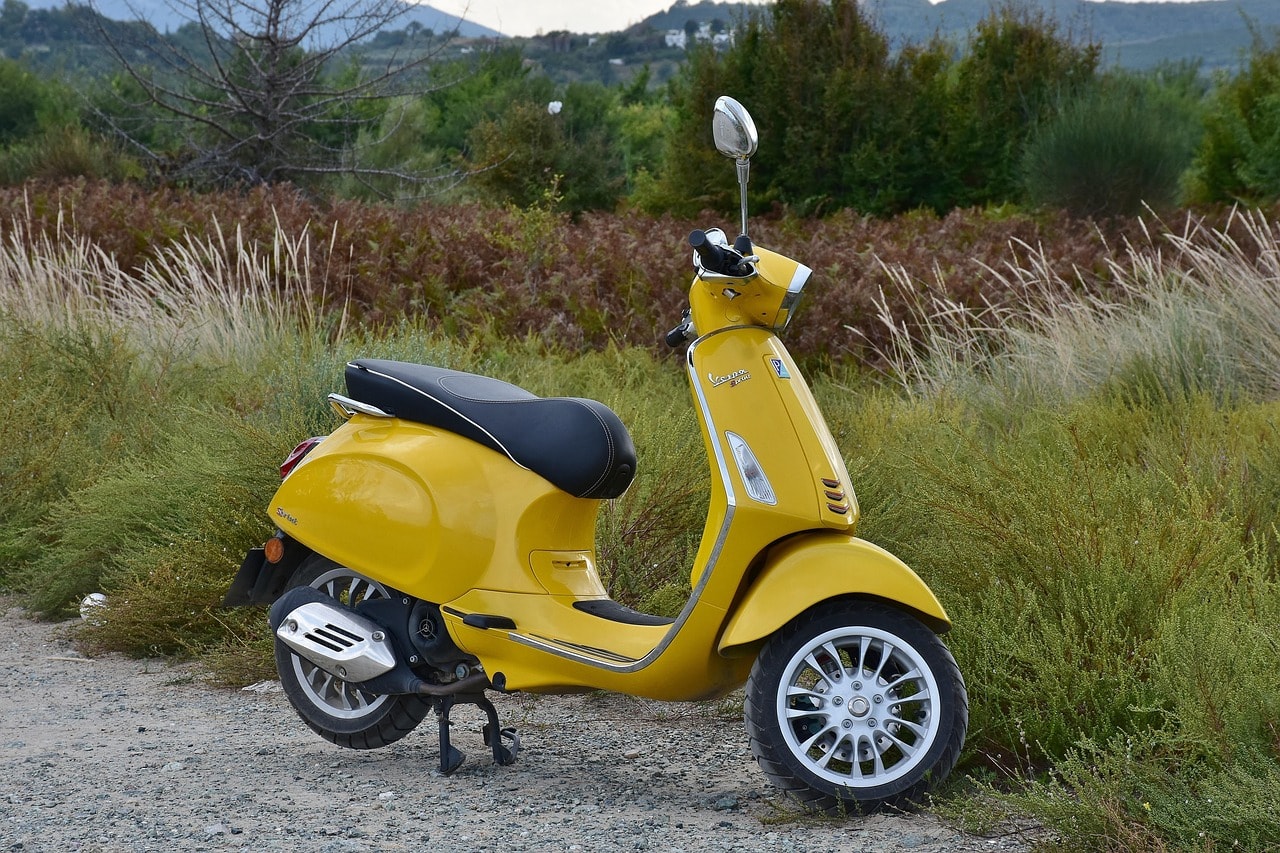
Here are the easiest ways to start your moped. Try to go through each step one by one, as these steps can help you start a moped:
Pre-Start Checks
Make sure to follow these pre-start checks before you operate your scooter:
- You need to ensure the rear brake is disengaged to avoid any accidents or injuries.
- Immediately check that the fuel valve is turned on to ensure the engine receives the necessary fuel.
- You can verify the scooter is in neutral gear to prevent any accidental movements.
- Make sure the kill switch is in the “on” position to allow the engine to start.
- Check that the brake lever is functioning properly to ensure safe braking.
- Check if the battery is weak or expired and consider replacing it with a new battery to ensure optimal performance.
Vintage Moped
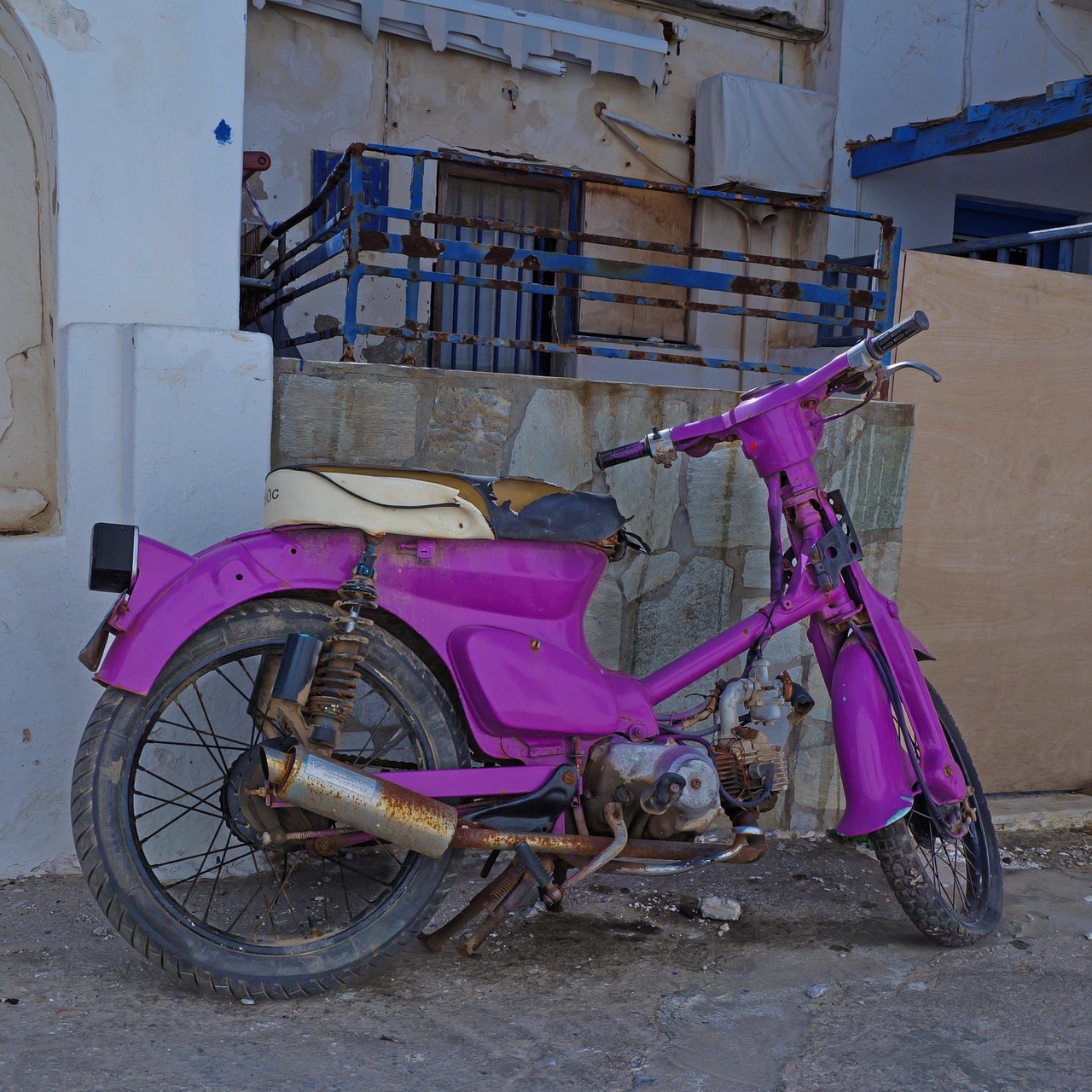
If you’re using a vintage moped with pedals, here are the ways to get it started.
Kickstarting a Moped
When the electric starter fails, you might need to kickstart your moped. Here are some specific situations where kickstarting a moped may be necessary:
- Your battery is dead.
- Your starter motor is faulty.
- There is a problem with the wiring between the battery and the starter motor.
- The engine is cold, and the battery does not have enough power to start it.
- You are riding in a remote area and do not have access to a battery charger or jump-start.
Step 1:
Before getting the moped rolling, slide the key into the ignition and turn it to the right until you hear a click.
Step 2:
This next step is easy, as you just have to ride the moped like you’re riding a bicycle by pedal starting. Make sure the kickstand is up before you push forward to gain momentum.
Step 3:
You need to find the start button near the right handlebar or a lever on the left. It is usually a red-colored switch. Some models have a kick-start lever near one of the wheels. If you have that, you have to give it a firm tap with your foot. Press or kick to fire up the engine, but be careful not to accidentally hit the brakes while in motion.
Step 4:
Try to locate the moped throttle, rest your palm on it, and twist it towards your direction. This gradually controls the engine’s airflow, helping you pick up speed as you begin your ride.
Step 5:
You can stop pedaling once the engine starts running smoothly. Now you need to adjust your sitting posture, make sure to focus on the road ahead and release the start lever or button to enjoy a hassle-free moped ride.
Turning On a Moped

Step 1:
Put the key in the lock. If you’re using vintage brands such as Puch, they have more complicated starting processes. First, if the lock has been engaged, start unlocking the moped using the key lock right below the handlebars. Move the handlebar to the right. Put the key inside the lock.
Step 2:
First, you need to turn the key to the right, and you should be able to push it in. Now, once you do that, you need to turn the key back to the left until the moped is unlocked.
Step 3:
You need to find the fuel valve on the right side of the moped’s frame and turn it on. This is a switch you must turn off when you park the moped. You may see the “on” and “off” labels on your moped. Pull the lever into the “on” position.
Step 4:
You will need to look near the handlebars for the engine switch, and then you flip it. It should be flipped to the run position.
Step 5:
Now, you need to pull the starting lever. For this, you need to hold the front brake, which is on the right side of the handlebars, so you keep the moped under control. Find the starting lever under the left handlebar. Keep the pedal level as you pull it to start the engine.
Step 6:
Now, as you continue holding the starting lever as you begin to pedal, your engine should start, and you should be free to go.
Electric Moped
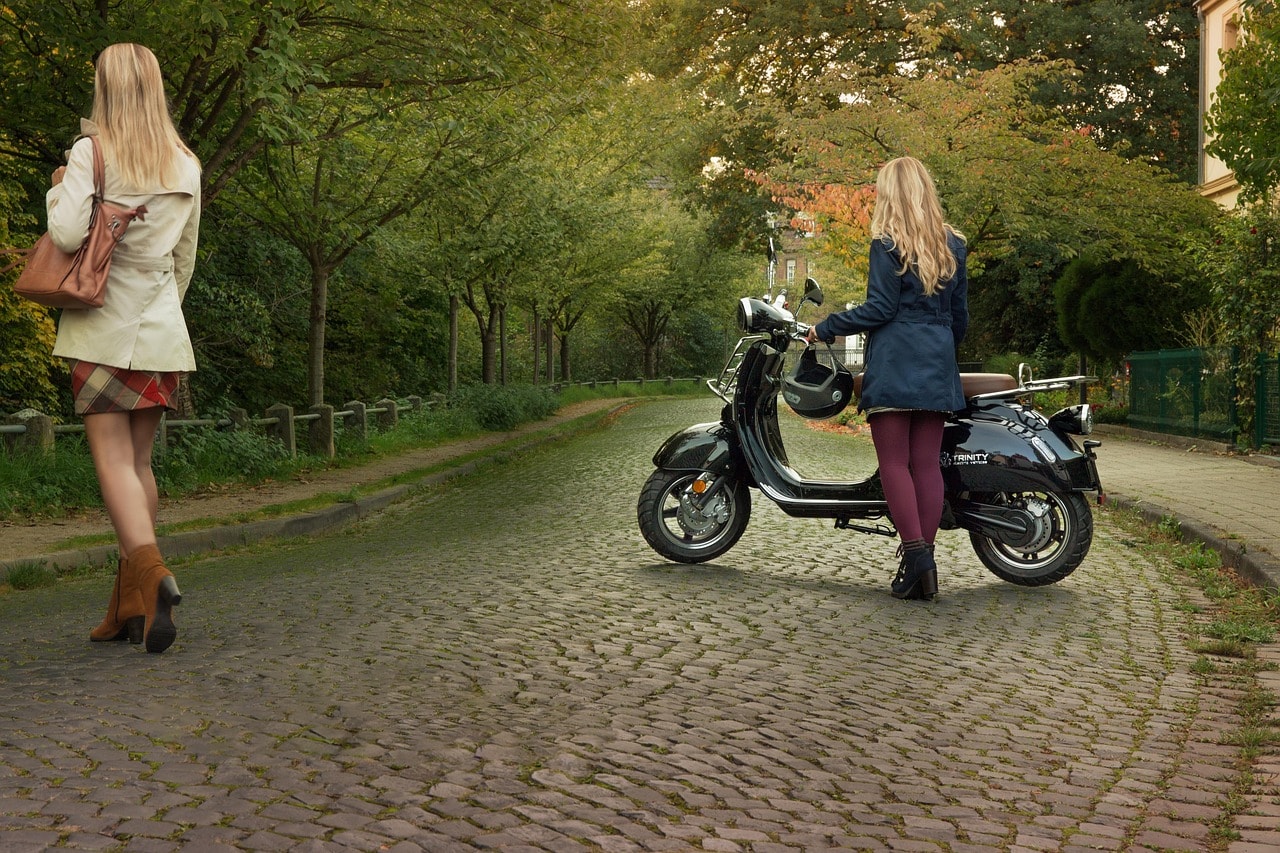
If you’ve got an electric moped, here’s how to get it started:
Step 1:
You need to first insert the key into the ignition and twist it to the right until you hear a click. That sound means the ignition is engaged, and you’re good to move on.
Step 2:
Check the kill switch—most mopeds have one to quickly shut off the engine. Look for a colored switch near the handlebars, usually marked with an open circle (○). Flip it to the “on” position so your moped is ready to start.
Step 3:
Hold both brake levers firmly, or at the very least, keep the left brake engaged—that’s your rear brake. Since mopeds can move as soon as they start, keeping the brake pressed will prevent any sudden jumps forward.
Step 4:
With the brakes still engaged, press the start button (usually a red one near the right handlebar) with your thumb. Once the engine comes to life, release the brakes and hit the road!
Tips for a Smooth Kick Start
Did you know that kickstarting is a skill that should be learned, and it’s easy to do with practice? You need to hold the brake lever in while kickstarting to make it easier, but it’s not necessary. Here are some tips to help you for a smooth kick start
- First locate a flat, level surface and sit on the scooter with your right foot on the kickstart lever.
- You need to push the kickstart lever down until you feel engine compression, then give it a swift kick to start the engine.
- Release the kickstart lever and push the choke lever back in gradually.
Avoiding Common Kick-Start Mistakes
- Don’t force the kickstart, as this can cause damage to the engine or kickstart mechanism.
- Make sure to practice kickstarting in a safe area, away from traffic.
- Avoid kickstarting with a dead battery, as this can cause further damage.
Alternative Starting Methods
When your scooter’s primary starting method fails, it is crucial for you to know about alternative techniques. If your battery is flat, you might consider jump-starting your scooter using another vehicle to provide the necessary power. You can try using a battery tender that can help maintain battery health and prevent charging issues. These following starting methods will be handy if you want to start your scooter without relying on traditional electric start or kick-start mechanisms.
Bump Starting Technique
Bump starting, also known as push starting or roll starting, is a method that uses the scooter’s momentum to turn the engine over and initiate combustion.
Step 1: Ensure the ignition is on and the kill switch is in the “run” position.
Step 2: You need to put the scooter in second gear (or first for some sportbikes with high first gears).
Step 3: You can now pull in the clutch lever.
Step 4: Push the scooter to gain speed, aiming for about 8 km/h (5 mph).
Step 5: Release the clutch quickly while giving a moderate amount of throttle.
Step 6: If the engine starts, immediately pull the clutch back in to prevent stalling.
Step 7: Rev the engine to keep it running
Make sure you do this step while you’re in a clear and open space for safety. I think it is more effective on a slight downhill slope.
Ps: bump starting is not recommended for scooters with automatic transmissions
Electric Start Options
While not an alternative method per se, understanding the electric start mechanism can help troubleshoot issues when the scooter won’t start normally.
Components of Electric Start System:
- Battery: Provides electrical energy to power the starter motor.
- Starter motor: Converts electrical energy into mechanical rotation.
- Starter solenoid/relay: Acts as a switch to connect the battery to the starter motor.
- Ignition switch: Controls the flow of electrical current.
Electric Start Process:
Step 1: Turn the ignition switch on, sending a signal to the starter solenoid.
Step 2: The solenoid connects the battery to the starter motor.
Step 3: The starter motor engages with the engine’s flywheel, causing it to rotate.
Step 4: This rotation initiates the engine’s four-stroke cycle.
Step 5: Once the engine starts, release the ignition to stop the starter motor
Push Start Method
The push-start method is similar to bump starting but can be used on automatic scooters and doesn’t require as much speed.
Steps for Push Starting:
Step 1: Turn on the ignition and ensure the kill switch is in the “run” position.
Step 2: For manual scooters, put it in neutral. For automatics, leave it as is.
Step 3: Position yourself to push the scooter forward.
Step 4: Release the brake and push the scooter to gain some speed.
Step 5: For manual scooters, engage the clutch by slowly releasing it while twisting the throttle.
Step 6: For automatics, simply twist the throttle as the scooter gains speed.
Step 7: As the engine starts, release the clutch completely (for manuals) and ride away
Safety Precautions and Essentials
To ride a scooter or a moped, you need to take care of a few essentials and follow safety precautions to have the best time in Hawaii.
- Always wear safety gear, including a helmet, to protect yourself in case of an accident.
- You should Wear protective clothing, such as gloves and knee pads, to prevent injuries before riding
- Have a valid driver’s license for the scooter.
- Safeguard yourself with insurance and be aware of local rules and regulations.
Avoiding Injuries
- Make sure the area is clear of any obstacles or hazards before starting the scooter.
- Ensure the scooter is on a level surface and the rear brake is disengaged.
- Avoid sudden movements or jerks while starting the scooter
- Ensure you have a good grip on the handlebars to maintain control
- Avoid kick-starting with a dead battery, as this can cause further damage.
Conclusion
Nobody wants to be late for a ride or have problems while starting a scooter. Now, starting a moped is a simple skill, but it requires a bit of practice. Make sure to follow the proper starting procedure, including pre-start checks and kick-start techniques. If you’re new to riding scooters or mopeds, you can always take a moped safety course. This will help you learn about basic moped operation and safety. Regular maintenance can help prevent starting issues and ensure a smooth ride. If your scooter consistently has starting problems, it’s best to have it checked by a professional mechanic. So, happy riding, Hoa Aloha!
FAQs
How to start using a scooter?
Engage the Clutch: Press the clutch lever and shift the scooter into second gear. Release the clutch immediately to keep the motor running continuously.
Reverse Engine: Once the engine starts, give it a slight turn for an extra boost.
How to launch a scooter?
Ensure that your rear wheels are firmly on the ground. As you approach the scooter ahead, shift your feet and hands forward, using your momentum to push the scooter off its stand. If it doesn’t work, try again.

